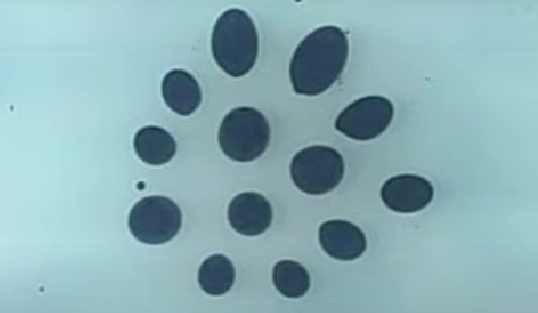Researchers from Taiwan-based Soochow University, Harbin Institute of Technology in China, and Planck Institute for Intelligent Systems in Germany have developed a soft robot that can split and re-assemble itself, as reported by Interesting Engineering.

The soft robot, which is called the Scale-Reconfigurable Miniature Ferrofluidic Robot (SMFR), is made using oil-based ferrofluid droplets that comprise of iron oxide nanoparticles dipped in hydrocarbon oil. The ferrofluid can respond to magnets and magnetic fields.
Additionally, the ferrofluids in the robot are easy to control and offer excellent flexibility with quick motion. This is because its particles are loosely bound to each other, which enables the robot to move easily through narrow passages, adjust its shape, and split under the influence of a magnetic field.
The research team demonstrated the abilities of the SFMR by letting it go through a maze with tight and complex passages, hard turns, and obstacles The soft robot was able to go through the maze by shape-shifting, shrinking, elongating, and re-assembling.
With the use of various magnetic fields, the researchers were able to split the robot into their desired number of units, reassemble them into one again when necessary, and control all of its functions.
Also Read: Inspired By A Caterpillar, This Soft Robot Crawls To Get Around
SMFR for Biomedicine
The researchers believe that the SFMR can be applied to medical technology, specifically in areas where big, bulky, and rigid systems are desired, such as in minimally invasive surgery and contactless manipulation of biological fluids.
Most soft robotics designs use humans or animals as models. The SFMR, on the other hand, is made according to the shape of micro-fluidic channels, which are used in the medical field to display blood cell counts or to deliver medicine to specific parts of the body.
The researchers also note that the ferrofluid could have a great impact in the world of medicine by delivering medical drugs to specific cells and organs. The robot can be injected into the body via syringe. Once inside, it can release the drugs at the appropriate target cells and locations.
Its flexibility and ability to deliver drugs at specific locations are currently superior to traditional drugs, which are injected into the bloodstream. The soft and flexible nature of the SMFRs enable it to squeeze through the tiny gaps inside the human body with ease. The SMFRs can remain in the body for as long as necessary, delivering the drugs to specific target cells.
Once the drugs have been delivered, the droplets can be absorbed by the body before the next dose. This is unlike traditional drugs, which can stay in the body for up to a week. The researchers claim that the SMFR can deliver drugs at a rate 100 times faster than the body's own cells in the bloodstream.
Related Article: Researchers Create Soft Robot That Moves Like Plant Tendrils
This article is owned by Tech Times
Written by April Fowell

![Apple Watch Series 10 [GPS 42mm]](https://d.techtimes.com/en/full/453899/apple-watch-series-10-gps-42mm.jpg?w=184&h=103&f=9fb3c2ea2db928c663d1d2eadbcb3e52)


